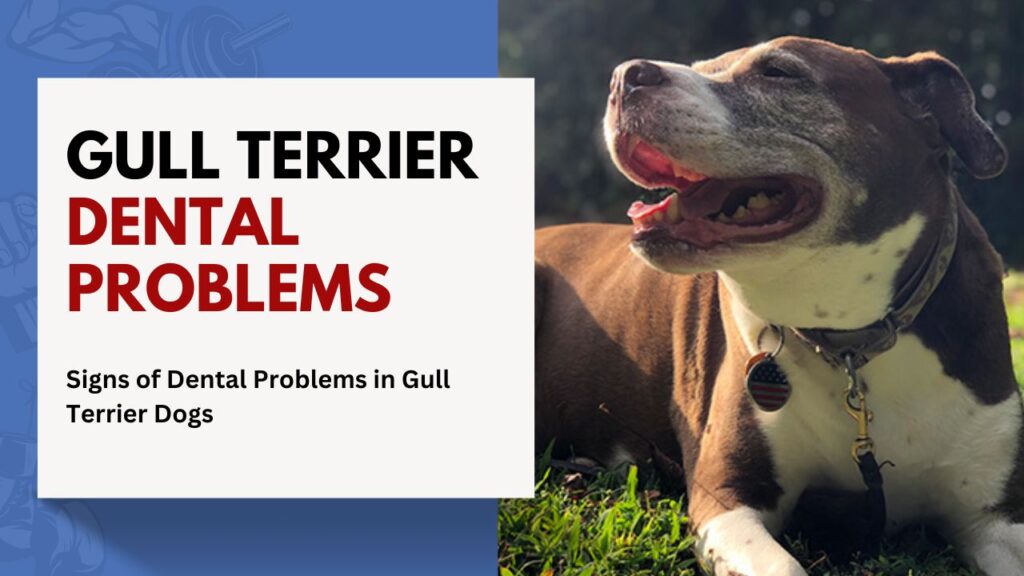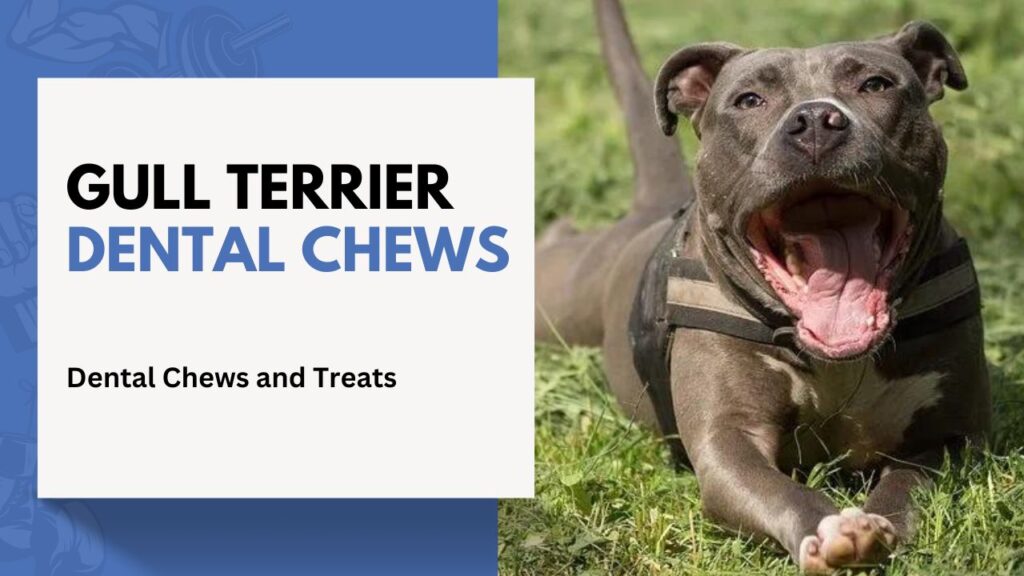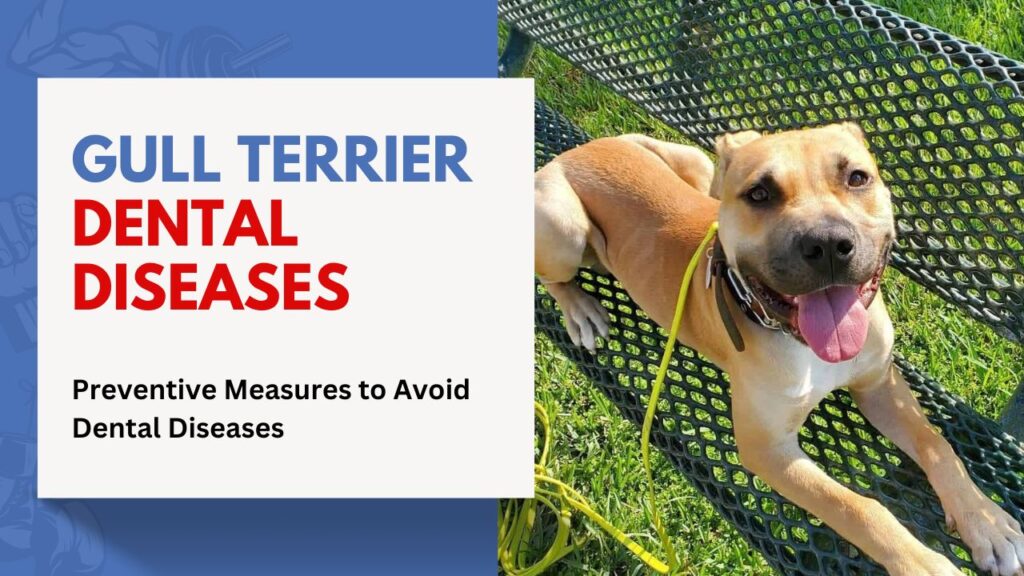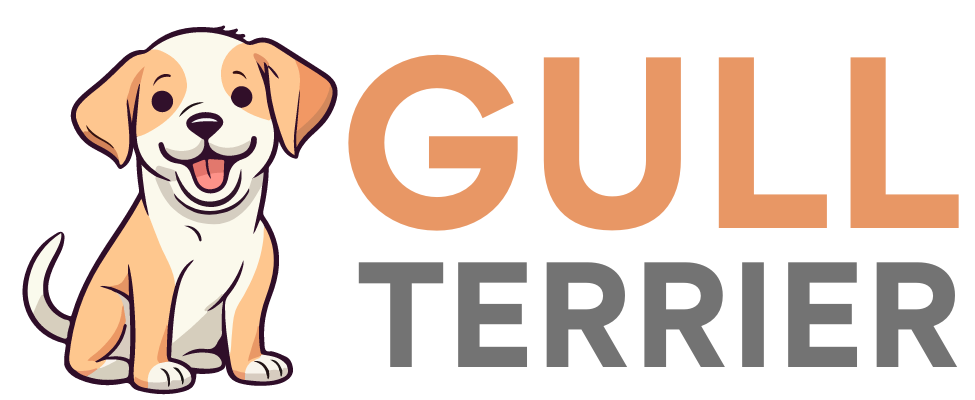A Comprehensive Guide to Dental Care for Gull Terrier Dogs
Last Updated: April 6, 2024, Written by: Faisal Amin
Regular dental care is not just a necessity for humans but holds paramount importance for our canine companions as well, including the robust Gull Terrier dogs. Dental health for these dogs is critical as they utilize their mouths for eating, playing, exploring, and tasting their surroundings, showcasing the multifunctional use of their dental structure. With adult dogs boasting up…
Regular dental care is not just a necessity for humans but holds paramount importance for our canine companions as well, including the robust Gull Terrier dogs. Dental health for these dogs is critical as they utilize their mouths for eating, playing, exploring, and tasting their surroundings, showcasing the multifunctional use of their dental structure. With adult dogs boasting up to 42 teeth, the need for maintaining healthy teeth through meticulous dental care cannot be overstated.
This article delves into the essentials of dental care for Gull Terrier dogs, outlining the indicative signs of dental problems and emphasizing the role of diet in ensuring dental health. It extends further to guide on brushing techniques, the utility of dental chews and treats, the importance of professional dental cleaning, innovative dental care products, and preventive measures to curb dental diseases.
Dental Health for Gull Terrier Dogs
Understanding the importance of regular dental care is pivotal for maintaining the overall health and comfort of Gull Terrier dogs. Here are some key points to consider:
- Effective Prevention: Brushing a Gull Terrier’s teeth stands as the most straightforward and effective method to fend off dental diseases and tooth decay. Incorporating this practice from a young age can significantly reduce the risk of such conditions.
- Systemic Health Impacts: It’s not just about the mouth; regular brushing plays a crucial role in preventing systemic diseases. Bacterial infections originating from the mouth can adversely affect vital organs, including the heart, kidneys, and liver, underscoring the interconnectedness of dental health and the broader well-being of the dog.
- Breed-Specific Concerns: With over 80% of dogs over three years old experiencing gum disease, Gull Terriers are among the breeds more susceptible to dental issues. This heightened risk makes vigilance in dental care even more critical for owners of this breed.
Dietary Influence on Dental Health:
- Quality of Food: The role of diet in maintaining dental health cannot be overstated. High-quality, healthful food contributes positively to a Gull Terrier’s dental health. Ingredients to avoid include grains, by-products, and meals, which are known to exacerbate plaque and tartar buildup.
- Impact of Poor-Quality Foods: Conversely, poor-quality foods can significantly increase the risk of dental problems by promoting the accumulation of plaque and tartar, which are precursors to more severe dental diseases.
Understanding the Dental Anatomy:
- Gull Terriers have a total of 42 teeth as adults, with 20 located in the upper jaw (Maxilla) and 22 in the lower jaw (Mandible). This comprehensive dental structure plays a crucial role in their daily activities, from eating to playing.
- Puppies, on the other hand, have 28 teeth, split evenly across both jaws. This transitional dental phase is a critical period for establishing good dental care habits.
In summary, the emphasis on regular dental care, the impact of diet on dental health, and an understanding of the breed’s specific dental anatomy are foundational elements in ensuring the dental health of Gull Terrier dogs. By addressing these areas, owners can significantly contribute to their pet’s overall well-being and quality of life.
Signs of Dental Problems in Gull Terrier Dogs

Recognizing the signs of dental problems in Gull Terrier dogs is crucial for maintaining their overall health and well-being. Early detection and treatment can prevent more severe health issues. Here are some key indicators that your Gull Terrier may be experiencing dental discomfort:
- Oral Odor and Gum Health:
- Foul or fetid smell from the mouth, often described as halitosis (bad breath).
- Inflamed, red swollen gums or any bleeding from the mouth, indicating potential gum disease.
- Eating Habits and Behavior Changes:
- Changes in eating habits or behavior, such as a reluctance to eat, which may suggest dental pain.
- Drooling or dropping food from the mouth, refusal to play with toys, or a noticeable decrease in appetite.
- Physical Signs and Discomfort:
- Facial swelling, especially noticeable around the mouth or under the eye.
- Loose or broken teeth, which could lead to difficulty in chewing and ultimately affect the dog’s nutrition.
It’s important for pet owners to regularly inspect their Gull Terrier’s mouth for these signs. If you notice any of the above symptoms or other unusual behaviors, it’s imperative to consult with your veterinarian for a proper diagnosis and treatment plan tailored to your dog’s needs. Regular dental check-ups and cleanings can significantly reduce the risk of dental diseases and contribute to a happier, healthier life for your pet.
The Role of Diet in Dental Health
In the quest for optimal dental care for Gull Terrier dogs, the role of diet cannot be overstated. A well-considered diet not only strengthens the teeth and improves overall health but also plays a crucial role in preventing dental diseases. Here’s how different dietary choices impact dental health:
Specially Formulated Foods and Additives:
- Dry Foods & Kibbles: Veterinary-approved canine dental diets, often in the form of hard-kibble dental diet products, are designed to be larger with an airy, fibrous texture. This design ensures that as the dog chews, the broken edges of the kibble pieces scrub away plaque, complementing regular toothbrushing.
- Water Additives: Certain additives for water can help maintain dental health by slowing the accumulation of plaque or helping remove plaque from a dog’s teeth.
- Chew Toys: Beyond their entertainment value, chew toys can serve a dual purpose by promoting oral health. They encourage chewing, which is a natural behavior that helps maintain dental health by breaking down food into smaller particles, massaging gums, and cleaning teeth.
Dental Diets and Treats:
- Dental Chews: Specifically designed to promote oral health, dental chews can be a valuable addition to a dog’s daily routine. However, it’s important to select chews that are appropriate for the dog’s size and chewing habits to avoid hard chews, bones, and stones that can wear down or break teeth.
- Dietary Impact on Plaque and Tartar: While a high-quality diet is fundamental, the texture and makeup of the diet also play significant roles. For instance, dry, crunchy foods can help keep teeth clean, but it’s crucial to understand that not all dry kibbles are effective unless they are specific dental kibbles. Some may contain refined carbohydrates, potentially increasing plaque and tartar levels.
Research and Veterinary Recommendations:
- Studies and Findings: Research has shown varying results regarding the effectiveness of dry food in preventing dental issues. For example, making kibble nuggets 50% bigger led to a 42% reduction in tartar buildup, and adding just one dental chew a day to a dog’s diet promoted better oral hygiene.
- Veterinary Oral Health Council (VOHC): Products that interrupt plaque accumulation, including certain diets, carry the VOHC seal specifying plaque control. This is a key indicator for dog owners to look for when selecting dental care products and diets.
Incorporating these dietary strategies alongside regular dental care practices, such as daily brushing, can significantly contribute to the dental health of Gull Terrier dogs. It’s essential to remember that dental diets, treats, toys, and other products are meant to be used in conjunction with brushing between professional cleanings and are not replacements for daily toothbrushing at home.
Brushing Your Gull Terrier Dog’s Teeth
Brushing your Gull Terrier Dog’s teeth is a cornerstone of good dental care, essential for preventing dental disease and ensuring healthy teeth. Here’s how to effectively incorporate this practice into your pet’s daily routine:
Getting Started with Toothbrushing
- Introduce Early: Begin when your dog is a puppy, ideally around 3 months old, as adult teeth start to come in. This helps them get accustomed to the process.
- Choose the Right Tools: Use a brush or rubber thimble and enzymatic dog toothpaste designed for canines. Human toothpaste contains ingredients toxic to dogs and should be avoided.
- Make It Positive: Start by letting your dog lick the toothpaste off the brush. Gradually introduce the brush to their mouth, touching teeth without pressure. Use tasty treats and praise to make brushing a rewarding experience.
Step-by-Step Brushing Guide
- Step 1: Apply a small amount of dog-specific toothpaste to the brush.
- Step 2: Gently lift your dog’s lips to expose the teeth. Start with the front teeth, then move to the back, using circular motions.
- Step 3: Focus on the outer surfaces of the teeth, where plaque tends to accumulate. Use gentle pressure, similar to writing with a pen.
- Step 4: Finish by brushing the front two teeth last. Rinse the brush frequently to ensure thorough cleaning.
Tips for Success
- Patience is Key: If your dog shows discomfort, stop and try again later. It may take several days for them to allow brushing comfortably.
- Frequency Matters: While daily brushing is ideal, brushing a few times a week can still significantly reduce plaque and tartar buildup.
- Training: Introduce toothbrushing gradually and positively. Use a soft-bristled brush with a long handle for hard-to-reach areas, and ensure the toothpaste is appealing to your dog.
- Consultation: Always consult your vet before introducing new products into your dog’s dental care routine.
Incorporating these practices into your Gull Terrier’s dental care routine can significantly contribute to their overall health and well-being. With patience, consistency, and the right approach, toothbrushing can become a positive experience for both you and your pet, laying the foundation for a lifetime of healthy teeth.
Dental Chews and Treats

When selecting dental chews and treats for your Gull Terrier, considering the quality and safety of these products is paramount. Here’s a breakdown of what to look for and some recommended products:
- VOHC Seal of Approval:
- Always opt for products with the Veterinary Oral Health Council (VOHC) seal to ensure they meet the standards for reducing plaque and tartar. Examples include Greenies, Purina DentaLife, C.E.T. Veggiedent, and Clenz-A-Dent Dental Sticks.
- Avoid Hard Materials:
- Steer clear of treats and toys labeled as “indestructible” or made from hard materials like tennis balls as they can lead to worn down tooth enamel or fractured teeth.
- Recommended Dental Chews:
- Greenies Regular Dog Dental Treats, Pedigree Dentastix, and Virbac C.E.T. VeggieDent Chews are among the top choices for effectively reducing plaque and tartar build-up.
Product Comparison:
| Product Name | VOHC Seal | Flavor Options | Price Range | Benefits |
|---|---|---|---|---|
| Greenies Dental Treats | Yes | Multiple | $$ | Soluble ingredients, reduces plaque/tartar |
| Pedigree Dentastix Original | No | Beef & Fresh | $ | Cost-effective, reduces plaque |
| Virbac C.E.T. Enzymatic Oral Hygiene | No | N/A | $$ | Enzymes for plaque removal, long-lasting |
| OraVet Dental Hygiene Chews | No | N/A | $$$ | Reduces bacteria, clean to the gumline |
| Wellness WHIMZEES Brushzees | No | N/A | $$ | No artificial ingredients, removes plaque |
| Yummy Combs Flossing Dog Treats | No | N/A | $$$ | Natural ingredients, reduces tartar |
Key Considerations:
- Size Matters: Ensure you choose the correct size of dental chews and treats for your Gull Terrier to avoid choking hazards and ensure they are effective at cleaning.
- Ingredients: Look for chews with natural ingredients that are fully digestible. Avoid cooked bones which can splinter and cause harm.
- Oral Health Beyond Chewing: Remember, while chew toys and dental treats aid in removing tartar and massaging gums, they cannot address periodontal disease alone. Complement these with regular tooth brushing and professional dental cleanings.
By incorporating these dental chews and treats into your Gull Terrier’s dental care routine, you can significantly enhance their oral hygiene, ensuring they maintain healthy teeth and a happy demeanor.
Professional Dental Cleaning
Professional dental cleaning for Gull Terrier dogs is an integral part of maintaining their oral health. This process involves several critical steps to ensure thorough cleaning and the well-being of your pet during the procedure. Here’s what you need to know:
Pre-Cleaning Process
- Initial Oral Exam: A veterinarian conducts an awake oral examination to assess the health of the dog’s mouth, including teeth, gums, and other oral structures.
- Blood Work: Blood is drawn for analysis to identify any potential issues that could affect anesthesia suitability.
- Anesthesia Preparation: Given the necessity of keeping the dog still for a thorough examination and cleaning, anesthesia is administered under strict protocols. This includes pre-anesthetic blood work to check kidney and liver function, a thorough physical examination, and the placement of an IV catheter for fluids and medications.
Cleaning Procedure
- Comprehensive Oral Examination and Radiographs: Under anesthesia, a complete oral exam is performed, and radiographs are taken to identify problems beneath the gum line that are not visible during the initial exam.
- Scaling and Polishing: Both hand and ultrasonic scalers are used to meticulously remove plaque and tartar above and below the gum line. Following scaling, the teeth are polished to smooth out any microscopic scratches, making it harder for plaque to adhere.
- Additional Treatments: Depending on the findings, additional treatments such as tooth extractions, sealer application to decrease plaque accumulation, or even advanced procedures like root canals may be performed by a board-certified veterinary dentist.
Post-Cleaning Care
- Recovery: Pets typically recover quickly from the anesthesia, aided by local anesthetics to minimize pain. Heated blankets or other devices are used throughout the procedure to maintain the dog’s body temperature.
- Home Care Recommendations: After the cleaning, the veterinarian will provide a full report of the findings along with recommendations for home care. This includes regular toothbrushing with pet-safe toothpaste and possibly the use of dental chews and treats that have the Veterinary Oral Health Council (VOHC) seal of approval.
Incorporating professional dental cleanings into your Gull Terrier’s dental care routine, alongside regular toothbrushing and the use of approved dental care products, plays a crucial role in preventing periodontal disease and ensuring your pet’s overall health and happiness.
Innovative Dental Care Products
In the realm of dental care for Gull Terrier dogs, innovative products play a significant role in maintaining healthy teeth, especially when daily brushing isn’t feasible. Among these, water additives have gained popularity for their ease of use and effectiveness in promoting oral hygiene. Here’s a comparison of some top-rated dental water additives:
| Product Name | Rating | Volume | Price | Key Benefit |
|---|---|---|---|---|
| TropiClean Fresh Breath Dental Health Solution | 4.1057 | 33.8-oz | $19.99 | Freshens breath, supports dental health |
| Oxyfresh Premium Pet Care Solution | 4.0944 | 16-oz | $17.95 | Neutralizes odors, promotes healthy gums |
| Dental Fresh Advanced Plaque & Tartar | 4.1092 | 32-oz | $15.48 | Targets plaque and tartar buildup |
| Nylabone Advanced Oral Care | 4.0151 | 32-oz | $8.99 | Freshens breath, reduces plaque |
| PetLab Co. Dental Formula | 3.7377 | 8-oz | $35.95 | Supports overall dental health |
| Oratene Enzymatic Brushless Oral Care | 4.0365 | 8-oz | $25.79 | Gentle formula for sensitive pets |
In addition to water additives, other innovative dental care products such as dental sprays and wipes offer alternative solutions for pet owners. Dog dental spray, for instance, is designed to kill plaque-causing bacteria and freshen breath, making it a quick and convenient option for pet owners on the go. Dental wipes provide a similar benefit, allowing for easy removal of plaque and food debris from the dog’s teeth and gums.
When selecting dental care products for your Gull Terrier, it’s essential to choose items specifically designed for dogs. Look for dog toothbrushes with soft bristles or silicone brushes that fit over your finger, paired with dog toothpaste that’s specially formulated for canine use. These products ensure safe and effective dental care at home, complementing regular veterinary checkups and professional cleanings. Remember, finding a veterinary dentist for your pet can further enhance their oral health, providing specialized care tailored to their needs.
Preventive Measures to Avoid Dental Diseases

To safeguard your Gull Terrier’s dental health and ward off dental diseases, incorporating preventive measures into their daily routine is essential. Here’s a breakdown of effective strategies:
Daily Dental Care Routine
- Brushing: Aim for daily brushing with a dog-specific toothpaste to remove plaque before it hardens into tartar. If daily brushing is challenging, strive for a minimum of three times per week.
- Dental Chews and Treats: Use VOHC-approved dental chews and treats that help reduce plaque and tartar buildup. Ensure they are appropriate for your dog’s size to prevent choking hazards.
- Oral Care Additives: Consider adding dental water additives to your dog’s water bowl to help maintain oral hygiene by reducing plaque accumulation.
Regular Veterinary Care
- Dental Examinations: Schedule regular dental check-ups with your veterinarian, ideally twice a year, especially for senior dogs. These visits help catch and address dental issues early.
- Professional Cleanings: Adhere to your vet’s recommendations for professional dental cleanings, which remove plaque and tartar buildup beyond what can be achieved at home.
Tailored Preventive Measures
- For Smaller Breeds: Given their increased risk for tartar formation and gum recession, focus on gentle brushing techniques and soft dental chews that are easier on their smaller mouths.
- For Larger Breeds: Since they’re prone to tooth fracturing from aggressive chewing, provide durable, safe chew toys that satisfy their need to chew without damaging their teeth.
By integrating these preventive strategies into your Gull Terrier’s care routine, you can significantly reduce the risk of dental diseases, ensuring they maintain healthy teeth and gums. Regular home care, combined with professional veterinary oversight, forms the cornerstone of effective dental health management, contributing to your dog’s overall well-being and longevity.
Explore Categories:
Conclusion
Throughout this comprehensive exploration, we have traversed the critical aspects of dental care for Gull Terrier dogs, emphasizing the pivotal role of routine dental maintenance, diet, and professional interventions in circumventing dental diseases. The iterative guidance, from brushing techniques and the selection of dental chews to the imperative of professional dental cleanings, underscores a deeply ingrained commitment to preserving the oral health of these robust companions. By embedding these practices into the daily regimen, pet owners can markedly diminish the incidence of dental ailments, enriching the quality of life and the longevity of their Gull Terrier dogs.
Reflecting on the broader implications, the discourse on dental health transcends immediate concerns, resonating with a profound understanding of the interconnectedness between oral hygiene and systemic well-being. This interplay spotlights the necessity for a holistic approach to pet care, where dietary choices, dental hygiene practices, and professional healthcare converge to forge a bulwark against disease. In sum, the welfare of Gull Terrier dogs hinges not merely on reactive measures but on a proactive, informed, and comprehensive strategy that champions dental health as a cornerstone of overall vitality.
FAQs
Understanding Dental Disease in Gull Terrier Dogs
What are the progressive stages of dental disease in dogs? Dental disease in dogs progresses through four main stages:
- Stage 1: Gingivitis, characterized by inflammation of the gums.
- Stage 2: Early Periodontitis, where early bone loss can be seen.
- Stage 3: Moderate Periodontitis, marked by further gum recession and bone loss.
- Stage 4: Advanced Periodontitis, where there is significant bone loss and potential tooth loss.
Dental Cleaning for Dogs: What to Expect
What does a typical dental cleaning involve for dogs? A typical dental cleaning for dogs involves several key steps under general anesthesia:
- A comprehensive dental examination to assess the health of the teeth and gums.
- Removal of tartar and plaque through teeth cleaning.
- Polishing of the teeth to smooth out any rough spots that might attract future plaque.
Keeping Your Dog’s Teeth Healthy
What are the best practices for maintaining my dog’s dental health? To ensure your dog’s teeth remain healthy, consider the following:
- Opt for the right diet. While some owners prefer wet food, others choose dry food. It’s important to select a diet that suits your dog’s specific needs.
- Regularly brush your dog’s teeth to remove plaque and prevent tartar buildup.
- Provide dental chews and treats, which can help clean the teeth through the natural action of chewing.
The Best Chews for Dental Health
Which chewables are recommended for cleaning a dog’s teeth? Tartar Shield Soft Rawhide Chews are highly recommended for maintaining dental health in dogs. These chews are clinically proven to significantly reduce bacteria and tartar buildup by over 50%, thanks to ingredients like sodium tripolyphosphate that aid in preventing tartar formation.
